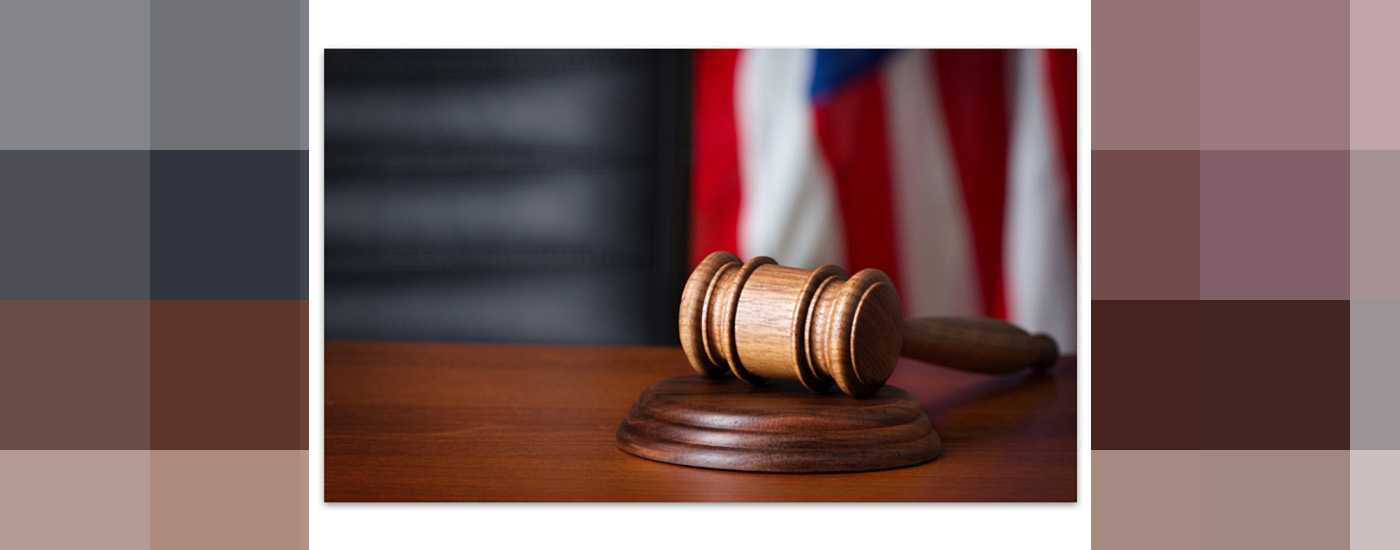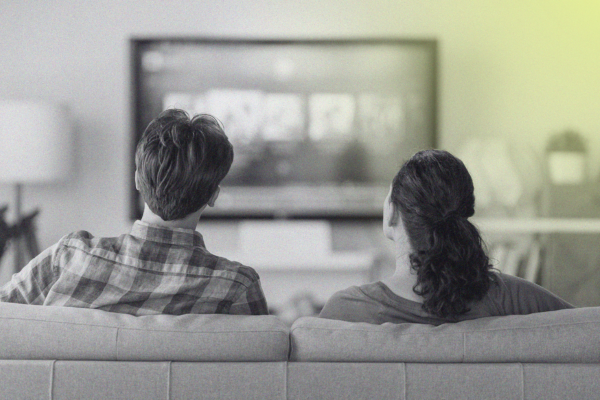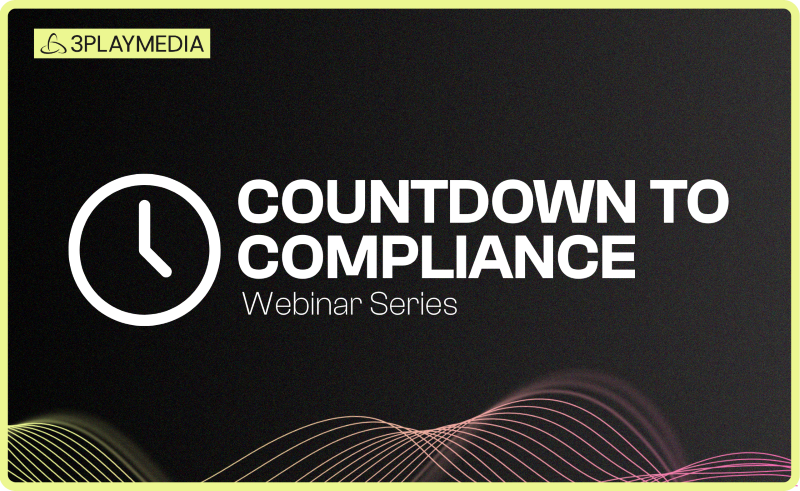- Audio Description
Audio Description Lawsuits: Netflix, Hamilton, UC Berkeley, and AMC Theatres
•

Audio Description Legal Requirements
In the US, audio description is required under many of the same anti-discrimination laws that require closed captioning. This includes the 21st Century Video Accessibility Act (CVAA), the Americans with Disabilities Act (ADA), and Section 504 and Section 508 of the Rehabilitation Act. Recently, however, the focus seems to be predominantly on the ADA, as several audio description lawsuits have been filed against organizations failing to meet the requirements of this act.
Audio Description Under the Americans with Disabilities Act
The Americans with Disabilities Act (ADA) guarantees equal opportunity for individuals with disabilities in employment, state and local government services, public accommodations, commercial facilities, and transportation. The ADA is made up of five categories called “Titles” that address each of these different areas.
Signed into law in 1990, before the Internet became a crucial part of our daily lives, the ADA doesn’t explicitly mention web accessibility. However, Title II and Title III of the ADA are known to most closely relate to web accessibility. Title II prohibits disability discrimination by all public entities at the local and state level, including schools, courts, police departments, public libraries, and public universities. Compliance is required regardless of whether or not these entities receive federal funding. Title III prohibits disability discrimination by “places of public accommodation,” which includes shared or public entities such as libraries, universities, hotels, museums, restaurants, retail stores, and transportation services that are privately owned.
While the ADA doesn’t name audio description as a requirement, it states that governmental organizations must ensure “effective communication” with citizens, including providing the necessary assistive technology to do so. Additionally, the ADA calls for “auxiliary aids” in communication to assist the disabled and allow equal access to goods and services that are provided to the public, thus requiring audio description be provided for visual content that would otherwise prohibit low vision or blind individuals from having equal access to the content.
American Council of the Blind v. Netflix
In an agreement between Netflix and the American Council of the Blind (ACB), as well as the Massachusetts-based Bay State Council of the Blind (BSCB) and a blind individual, Netflix has added audio descriptions to many of its programs. The settlement required Netflix to provide audio descriptions for many popular titles in both its online streaming platform and disc rental service by December 31, 2016. You can browse movies and shows that currently have audio descriptions available by visiting netflix.com/browse/audio-description from within your Netflix account.
The Federal Communications Commission (FCC) requires broadcasters to provide audio descriptions. Netflix, an Internet-based service – not a broadcaster – didn’t think they were required to provide audio descriptions. Under the FCC, they are not required to add description – however, the vague wording of the ADA leaves quite a bit of ambiguity regarding which accommodations are necessary, and for whom. The courts argue that Internet-only businesses should be considered “places of public accommodation” under Title III of the ADA.
Being under fire of disability rights advocates is nothing new for Netflix. In 2010, a suit was brought against Netflix by the National Association of the Deaf (NAD), for failing to provide closed captions on all of their streaming video. This was the first time the ADA had been interpreted to apply to online-only businesses, and online-only video content.
In 2012 Netflix decided to settle with a legally binding consent decree with the NAD, resulting in 100% of Netflix’s US-based On-demand Streaming Content being captioned or subtitled.
When approached by disability rights advocates this time around, Netflix decided to work with them, coming to an agreement to make their on-demand content more accessible. This agreement adopted the Web Content Accessibility Guidelines (WCAG) 2.0 Level AA as the accessibility standard.
Broadway’s “Hamilton” Sued for Failing to Provide Audio Description
Earlier this year, a blind individual contacted the box office of the Broadway show “Hamilton” to inquire about audio description services for the Broadway musical. After being told that there were none available, he proceeded to file a class action lawsuit against the producers of “Hamilton,” as well as the owners of the theater where Broadway’s smash hit is performed. The lawsuit, Lasser v Nederlander Organization Inc et al., cites “systemic civil rights violations” against blind and low-vision theatergoers. It goes on to further explain that failure to provide this service directly violates Title III of the ADA, which prohibits disability discrimination by “places of public accommodation.”
While this lawsuit brings to light failure to meet legal requirements, Broadway has taken several steps in recent years to improve accessibility through various programs. The Broadway League and Theatre Development Fund (TDF) paired up to launch Theater Access NYC, a website for theatergoers to find performances with accessibility services. While some services are widely available, like wheelchair-friendly seats and captioning and sign language interpretation, other services, like audio description, are much more narrowly available.
“Hamilton” is certainly not the only Broadway show lacking audio description, but with “Hamilton” in the spotlight, this lawsuit will likely set precedent for others in the industry. Broadway producers typically have the best of intentions regarding accessibility – after all they want more people to be able to attend their show – but during the chaotic, busy months leading up to a show’s opening, accessibility often gets put on the back burner. One explanation for why this happens is that producers are hesitant to spend the money on accommodations before they know how successful a show will be.
US Department of Justice v. University of California, Berkeley
As technology rapidly advances, the US Department of Justice’s (DOJ) Civil Rights Division works diligently to ensure web accessibility for all people, regardless of disability. One way they’re moving toward this goal is by following up on complaints submitted by citizens.
In October, 2014, as part of this effort, the DOJ began investigating the free, public MOOC (Massive Open Online Course) system offered by UC Berkeley. Two years later, the DOJ submitted a letter to the administration at UC Berkeley, accusing the MOOCs of being inaccessible.
Among other things, the letter cited a lack of audio description on video content. During the investigation, it was found that roughly half of the videos on UC Berkeley’s YouTube channel failed to provide audio description or an equivalent format for visual information. The DOJ also reviewed almost 100 lectures from more than two dozen of the UC Berkeley courses available on iTunes. Similarly, they found that these videos had no audio description or alternative format for conveying the visual content.
UC Berkeley has since decided to take down all of their free online course content, rather than make it accessible. They stated that in addition to this case, there were several other factors which led to their decision, including account usage statistics and concerns about protecting intellectual property.
AMC Theatres Sued for Failing to Provide Usable Audio Description
A San Francisco man who was consistently deprived of enjoying the movies with his family sued AMC Theatres for providing inadequate audio description services. Although AMC Theatres claims to have the assistive technology to make movies accessible for blind and low-vision guests, these guests are frequently given equipment that is broken, drained of battery, or even equipment intended for Deaf users rather than blind users. He explained that if he gets the correct device at all, it’s usually after AMC staff has gotten help from a manager, which takes additional time, and makes him late for the movie.
Showing movies without audio description devices, which allow blind people to hear synchronized descriptions of visual elements, leaves those individuals without full access. Thus, audio description is “essential for blind viewers to understand movies.”
Despite providing entertainment to millions of individuals, AMC Theatres – which operates over 300 movie theaters across the country – fails to provide equal services to low vision and blind consumers by not providing appropriate and usable audio description technology.
The lawsuit, Blanks, et al. v. AMC Entertainment Inc., et al., seeks a court declaration that AMC Theatres discriminates against blind and low vision movie patrons, an order that AMC Theatres ensures its equipment works properly, and attorney’s fees and legal costs for violating the ADA. This San Francisco man, as well as other blind and low-vision customers, miss crucial aspects of the movie, making it very difficult – or impossible – to enjoy the movies with their families or friends.
__
Describing your content makes it accessible, but, it’s also the law! Find out more about audio description, and click below to get started.

Filed under
About the author
Share this page
Related Posts
-
 Read more: A University Guide to Budgeting and Auditing for ADA Video Compliance
Read more: A University Guide to Budgeting and Auditing for ADA Video Compliance- Legislation & Compliance
A University Guide to Budgeting and Auditing for ADA Video Compliance
-
 Read more: Everything to Know About the Americans with Disabilities Act (ADA) and Video Compliance
Read more: Everything to Know About the Americans with Disabilities Act (ADA) and Video Compliance- Legislation & Compliance
Everything to Know About the Americans with Disabilities Act (ADA) and Video Compliance
-
 Read more: Subtitling vs. Dubbing: Which is Right for Your Audience?
Read more: Subtitling vs. Dubbing: Which is Right for Your Audience?- Subtitling
Subtitling vs. Dubbing: Which is Right for Your Audience?


